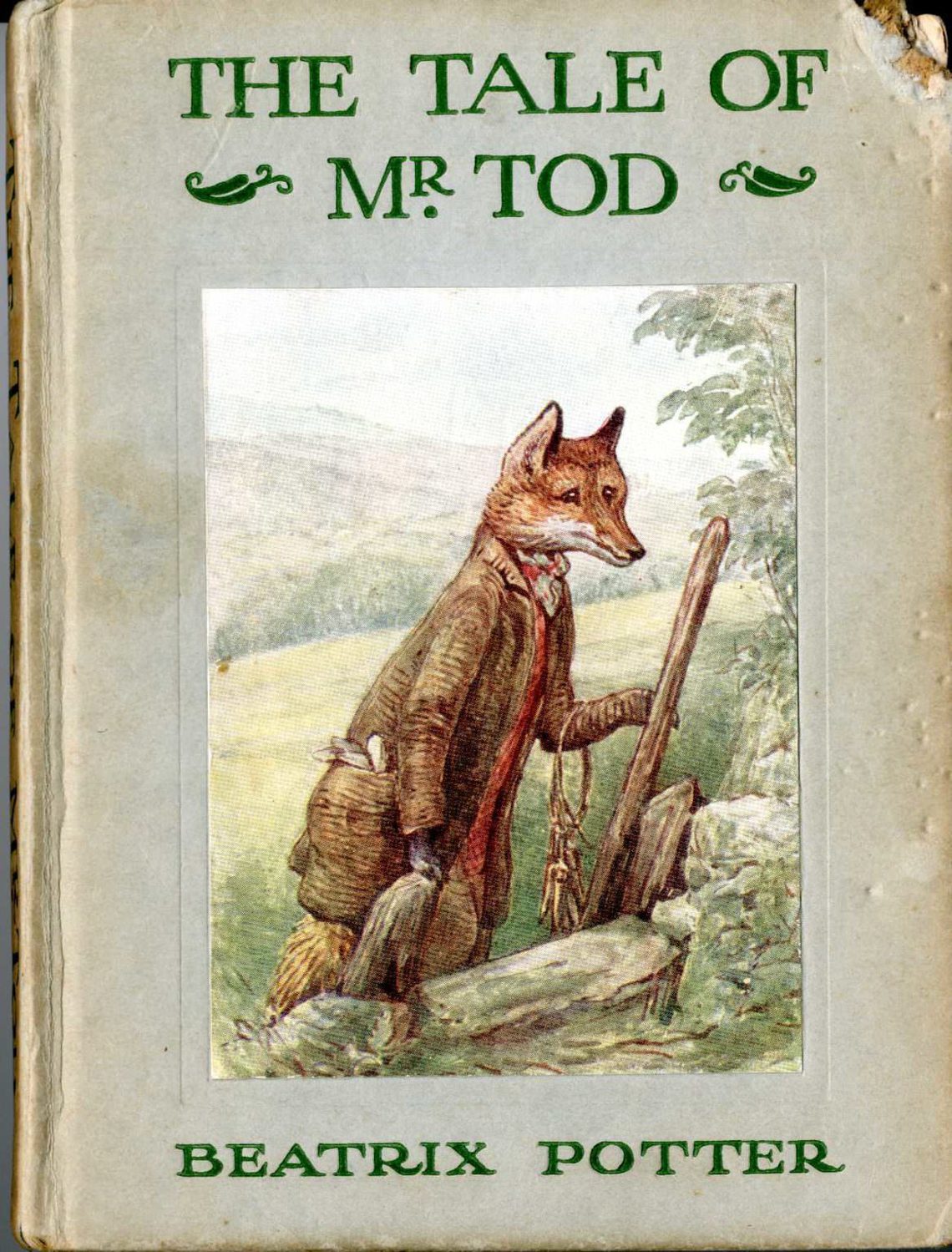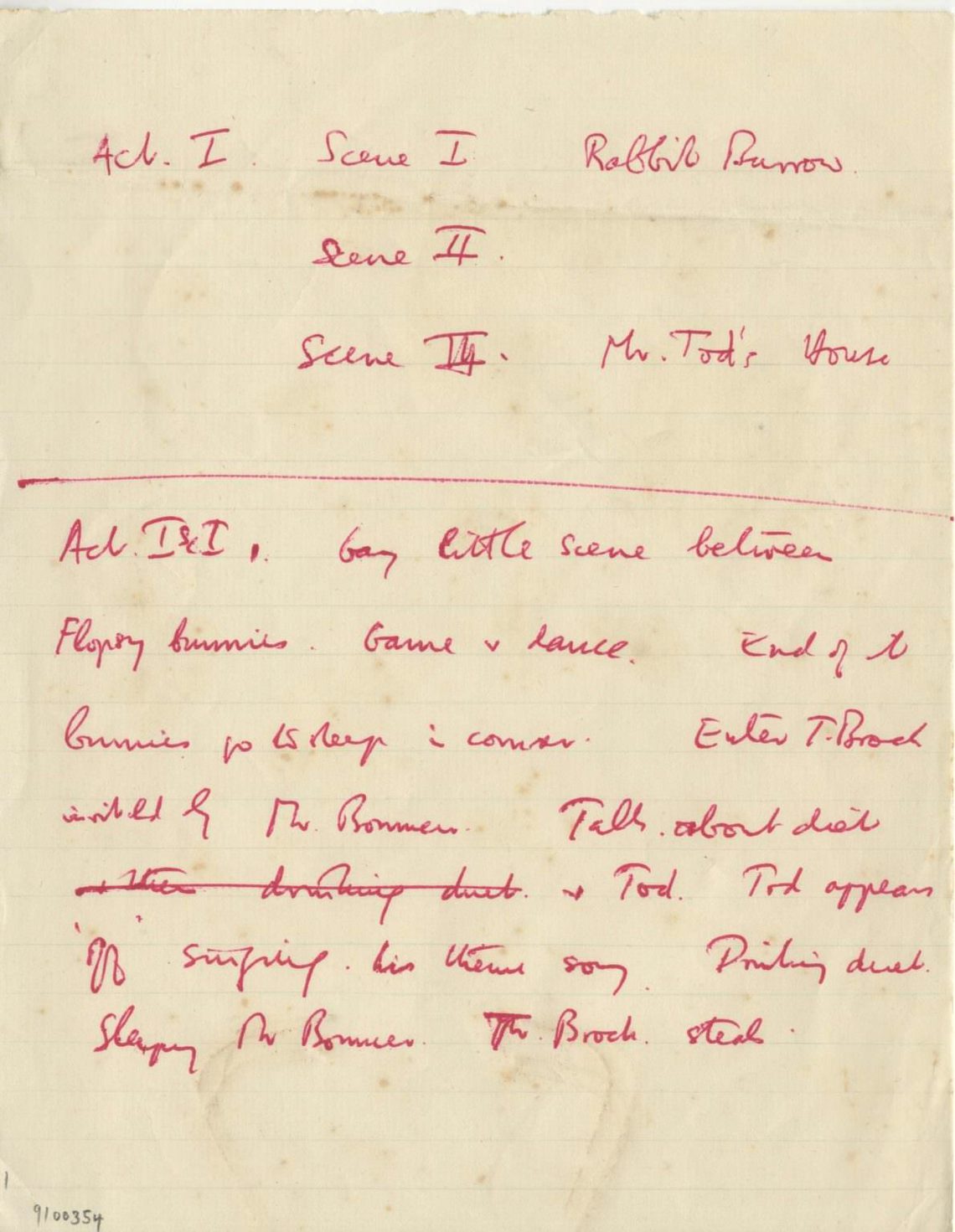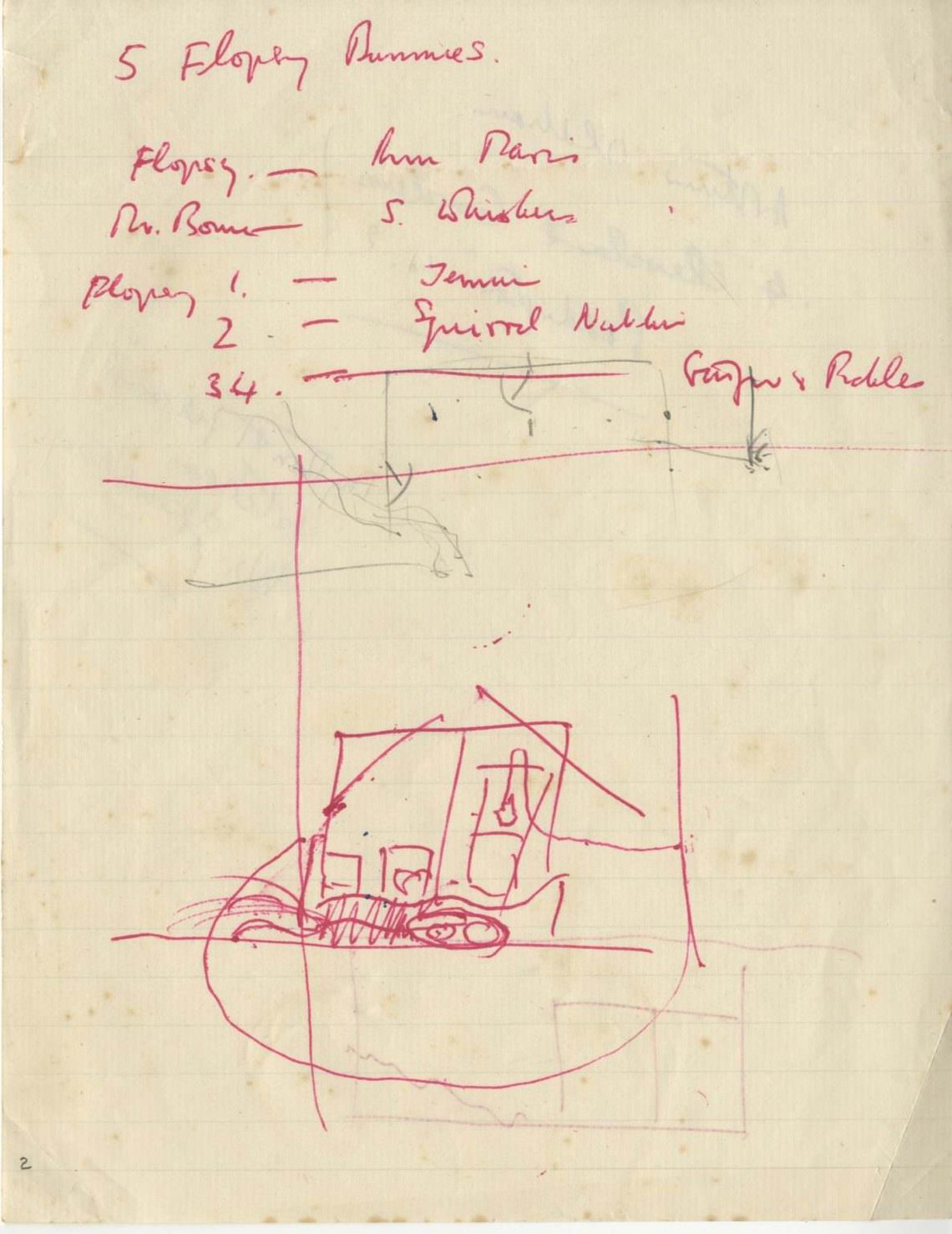Did you ever imagine Peter Pears donning a fox’s costume for an opera, or that Britten would try his hand at set design? If not read on…
Amid the catalogue of works Britten was forced to discard sits plans for an opera that must, at one stage, have been very close to his heart, not least because it would have allowed him to revisit the childhood world he always regarded as a place of escapism. Between the 1949 opera The Little Sweep and the 1958’s archetype for community opera Noye’s Fludde lies Britten’s abandoned adaptation of The Tale of Mr Tod. In the corner shelf of the library that he and Peter Pears built in 1964 sits a set of works of Beatrix Potter. The cover of one of these volumes bears evidence of attention from one or other of Britten and Pears’ dachshunds. But it stands out for another reason.

Britten and Pears’ copy of The Tale of Mr. Tod that includes a corner chewed by one of their resident dogs.
In 1951 the composer thought quite seriously about turning Potter’s fantasy about the badger Tommy Brock and his nemesis Mr Tod the fox into an opera. Anecdotally, it was suggested that Pears, in the tradition of receiving a principal tenor role in Britten’s operas, was set to play the eponymous Tod. Continuing with counterfactual casting, it’s likely that Britten might have had a bass, such as Owen Brannigan, in mind for the sinister badger.

Synopsis outline of The Tale of Mr. Tod.
Britten’s outline for the opera progressed only as far as three scenes for Act I. He wrote out the synopsis in red ink: Mr Bouncer is looking after his grandchildren while their parents Benjamin and Flopsy Bunny are away. The unscrupulous badger steals the flopsy bunnies (with plans to eat them) while Mr Bouncer sleeps. A ‘Drinking duet’ takes place, but it’s unclear whether this is sung by Brock and Bouncer or Brock and Tod. Things have moved relatively swiftly as scene iii takes place in one of Mr Tod’s houses, where the badger eventually falls asleep.

Britten’s set design sketch for The Tale of Mr. Tod.
Britten also left us an impression of a possible set design. A sketch of sorts depicts the bunnies asleep in the ‘Rabbit Burrow’, though frankly the composer’s concept is abstract, in every sense of the word.
On that cliffhanger the fate of the flopsy bunnies rests, although we can assume that Britten would have followed the book’s narrative to the letter. In fact, we can be certain that would have been the case as the Managing Director of Frederick Warne & Co. Ltd., publishers of The Tale of Mr Tod, stipulated that Britten was to agree that there would be ‘no caricature or essential alteration of Miss Beatrix Potter’s original work’. This was mentioned in reply to a letter to Ernst Roth, who was managing Britten’s business affairs at Boosey and Hawkes. Roth sent an expression of interest on Britten’s behalf to secure permission for the opera. Although Warne agreed to the idea, their suggestion of royalty payment for music sales and performance of the opera caused Roth to rethink the entire project. On the 30 May 1951 Roth wrote to Britten stating his opinion that the royalty demands were ‘much too high’ but left the composer with the quandary: ‘but I said I would leave it to your final decision.’
Britten may well have taken Roth’s advice, or he might have gone off the idea of adapting the story, or perhaps he needed to concentrate full-time on the completion of Billy Budd, which was due to premiere at the Royal Opera House at the end of the year. The decision may have resulted from a combination of all of the above. We shall never know. All that is left to us are a few scribbled notes, a rather challenging drawing, and the complete set of Beatrix Potter that inspired this interesting operatic might-have-been.
- Dr Nicholas Clark, Librarian
